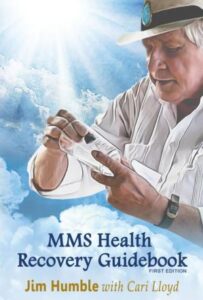(DMSO) Dimethyl sulfoxide is an organosulfur compound with the formula (CH3)2SO. This colorless liquid is an important polar aprotic solvent that dissolves both polar and nonpolar compounds and is miscible in a wide range of organic solvents as well as water. It penetrates the skin very readily, giving it the unusual property for many individuals of being secreted onto the surface of the tongue after contact with the skin and causing a garlic-like taste in the mouth
(DMSO) Dimethyl sulfoxide, a by-product of the wood industry, has been in use as a commercial solvent since 1953. It is also one of the most studied but least understood pharmaceutical agents of our time–at least in the United States. According to Stanley Jacob, MD, a former head of the organ transplant program at Oregon Health Sciences University in Portland, more than 40,000 articles on its chemistry have appeared in scientific journals, which, in conjunction with thousands of laboratory studies, provide strong evidence of a wide variety of properties. (See Major Properties Attributed to DMSO) Worldwide, some 11,000 articles have been written on its medical and clinical implications, and in 125 countries throughout the world, including Canada, Great Britain, Germany, and Japan, doctors prescribe it for a variety of ailments, including pain, inflammation, scleroderma, interstitial cystitis, and arthritis elevated intercranial pressure.
In the United States, DMSO has only approval only for use as a preservative of organs for transplant and for interstitial cystitis, a bladder disease. It has fallen out of the limelight and out of the mainstream of medical discourse, leading some to believe that it was discredited; DMSO penetrates the skin very readily, giving it the unusual property for many individuals of being secreted onto the surface of the tongue after contact with the skin and causing a garlic-like taste in the mouth
DMSO: History
The history of DMSO as a pharmaceutical began in 1961, when Dr. Jacob was head of the organ transplant program at Oregon Health Sciences University. It all started when he first picked up a bottle of the colorless liquid. While investigating its potential as a preservative for organs, he quickly discovered that it penetrated the skin quickly and deeply without damaging it. He was intrigued. Thus began his lifelong investigation of the drug.
The news media soon got word of his discovery, and it was not long before reporters, the pharmaceutical industry, and patients with a variety of medical complaints jumped on the news. Because it was available for industrial uses, patients could dose themselves. This early public interest interfered with the ability of Dr. Jacob.
DMSO Penetrates Membranes and Eases Pain
The first quality that struck Dr. Jacob about the drug was its ability to pass through membranes, an ability that has been verified by numerous subsequent researchers.1 DMSO’s ability to do this varies proportionally with its strength–up to a 90 percent solution. From 70 percent to 90 percent has been found to be the most effective strength across the skin, and, oddly, performance drops with concentrations higher than 90 percent. Lower concentrations are sufficient to cross other membranes. Thus, 15 percent DMSO will easily penetrate the bladder.2
In addition, DMSO can carry other drugs with it across membranes. It is more successful ferrying some drugs, such as morphine sulfate, penicillin, steroids, and cortisone, than others, such as insulin. What it will carry depends on the molecular weight, shape, and electrochemistry of the molecules. This property would enable DMSO to act as a new drug delivery system that would lower the risk of infection occurring whenever skin is penetrated.
DMSO perhaps has been used most widely as a topical analgesic, in a 70 percent DMSO, 30 percent water solution. Laboratory studies suggest that DMSO cuts pain by blocking peripheral nerve C fibers.3 Several clinical trials have demonstrated its effectiveness,4,5 although in one trial, no benefit was found.6 Burns, cuts, and sprains have been treated with DMSO. Relief is reported to be almost immediate, lasting up to 6 hours. A number of sports teams and Olympic athletes have used DMSO, although some have since moved on to other treatment modalities. When administration ceases, so do the effects of the drug.
Dr. Jacob said at a hearing of the U.S. Senate Subcommittee on Health in 1980, “DMSO is one of the few agents in which effectiveness can be demonstrated before the eyes of the observers….If we have patients appear before the Committee with edematous sprained ankles, the application of DMSO would be followed by objective diminution of swelling within an hour. No other therapeutic modality will do this.”
Chronic pain patients often have to apply the substance for 6 weeks before a change occurs, but many report relief to a degree they had not been able to obtain from any other source.
DMSO and Inflammation
DMSO reduces inflammation by several mechanisms. It is an antioxidant, a scavenger of the free radicals that gather at the site of injury. This capability has been observed in experiments with laboratory animals7 and in 150 ulcerative colitis patients in a double-blinded randomized study in Baghdad, Iraq.8 DMSO also stabilizes membranes and slows or stops leakage from injured cells.
At the Cleveland Clinic Foundation in Cleveland, Ohio, in 1978, 213 patients with inflammatory genitourinary disorders were studied. Researchers concluded that DMSO brought significant relief to the majority of patients. They recommended the drug for all inflammatory conditions not caused by infection or tumor in which symptoms were severe or patients failed to respond to conventional therapy.9
Dr. Jacob remains convinced that it can play a significant role in the treatment of arthritis. “You talk to veterinarians associated with any race track, and you’ll find there’s hardly an animal there that hasn’t been treated with DMSO. No veterinarian is going to give his patient something that does not work. There’s no placebo effect on a horse.”
DMSO and Central Nervous System Trauma
Since 1971, Dr. de la Torre, then at the University of Chicago, has experimented using DMSO with injury to the central nervous system. Working with laboratory animals, he discovered that DMSO lowered intracranial pressure faster and more effectively than any other drug. DMSO also stabilized blood pressure, improved respiration, and increased urine output by five times and increased blood flow through the spinal cord to areas of injury.15-17 Since then, DMSO has been employed with human patients suffering severe head trauma, initially those whose intracranial pressure remained high despite the administration of mannitol, steroids, and barbiturates. In humans, as well as animals, it has proven the first drug to significantly lower intracranial pressure, the number one problem with severe head trauma.
“We believe that DMSO may be a very good product for stroke,” says Dr. de la Torre, “and that is a devastating illness which affects many more people than head injury. We have done some preliminary clinical trials, and there’s a lot of animal data showing that it is a very good agent in dissolving clots.”
In addition to its ability to lower intracranial pressure following closed head injury, Dr. de la Torre’s work suggests that the drug may actually have the ability to prevent paralysis, given its ability to speedily clean out cellular debris and stop the inflammation that prevents blood from reaching muscle, leading to the death of muscle tissue.
DMSO has long been used to promote healing. People who have it on hand often use it for minor cuts and burns and report that recovery is speedy. Several studies have documented DMSO use with soft tissue damage, local tissue death, skin ulcers, and burns.
In relation to cancer, several properties of DMSO have gained attention. In one study with rats, DMSO was found to delay the spread of one cancer and prolong survival rates with another.22 In other studies, it has been found to protect noncancer cells while potentiating the chemotherapeutic agent. Ref: dmso.org
Cancer Forbidden Suppressed Cures
Cancer Forbidden Suppressed Cures
Just three miles from the US border, there is a successful alternative cancer clinic in Tijuana, Mexico. Called the BioMedical Center, it was established there in 1963. According to the Center’s executive administrator, Liz Jonas, its cancer-free success rate is 80 percent. This includes patients abandoned by conventional oncology who have turned to natural cancer cures.
What’s in the Hoxey Formulas?
A solution of cascara (Rhamnus purshiana) and potassium iodide served as a base for the following herbs, added according to individual cancer cases:
- Burdock root (Arctium lappa)
- Barberry or berberis root (Berberis vulgaris)
- Buckthorn bark (Rhamnus frangula)
- Stillingia root (Stillingia sylvatica)
- Prickly ash bark (Zanthoxylum americanum)
- Poke root (Phytolacca americana)
Hoxsey’s understanding of cancer was that it is a systemic disease created from metabolic imbalances that needed to be restored. His tonics were meant to help create homeostasis (internal stability), kill cancer cells, and remove the toxins created from killing cancer cells. This perspective is in line with almost all natural cancer treatments and practitioners.
Hoxsey’s treatments were considered effective by a panel of independent physicians who had reviewed the case histories of his patients. Their written testimonies were used in Hoxsey’s 1950 lawsuit against the AMA, along with testimonials from some of his cured patients.






